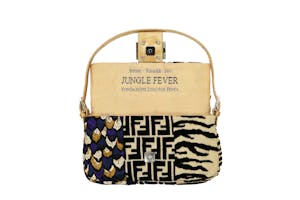
Fondazione Arte della Seta Lisio of Florence was one of the artificers, as fabric supplier, of the 11 collections of Baguettes by Fendi produced from 1997 through 2005, and of a special model created specifically for the 2007 runway show on the Great Wall of China,
The fabrics, hand-woven of silk on the manufactory’s historic looms, were the result of close collaboration between the creative talents of the fashion house and of the foundation: each Baguette bag is fruit of a complex design process and meticulous preparation carried out in various stages.
Fendi believed in the skills and in the possibilities offered by Fondazione Lisio and entrusted the manufactory with creation of the fabrics for twelve Baguette models.
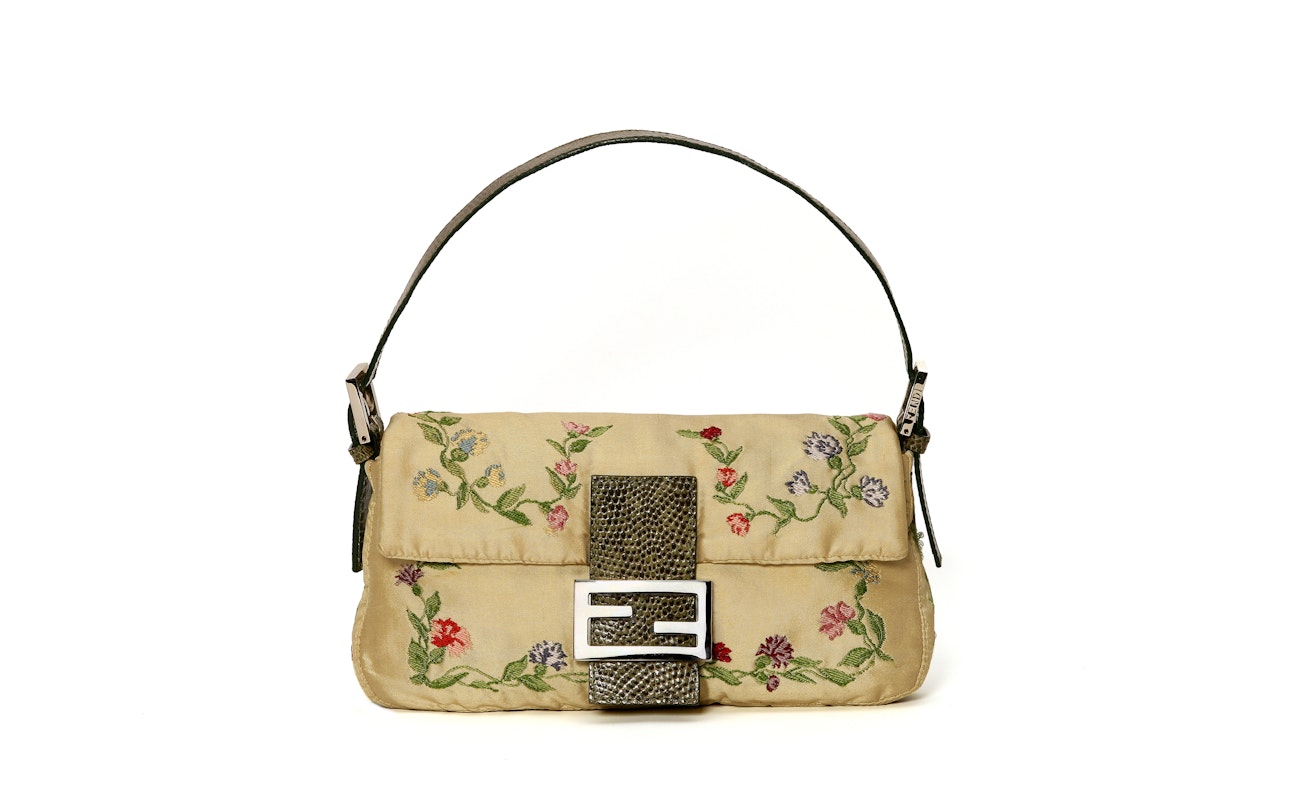
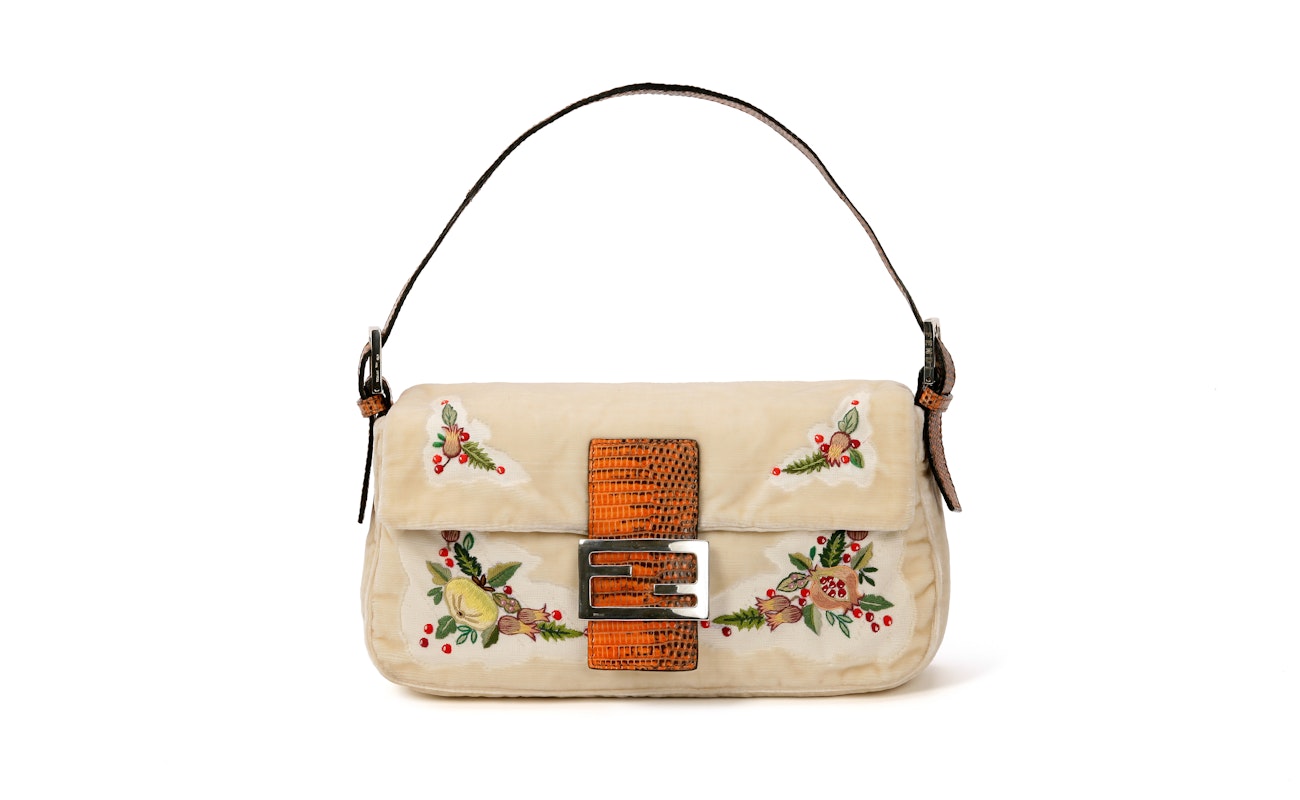
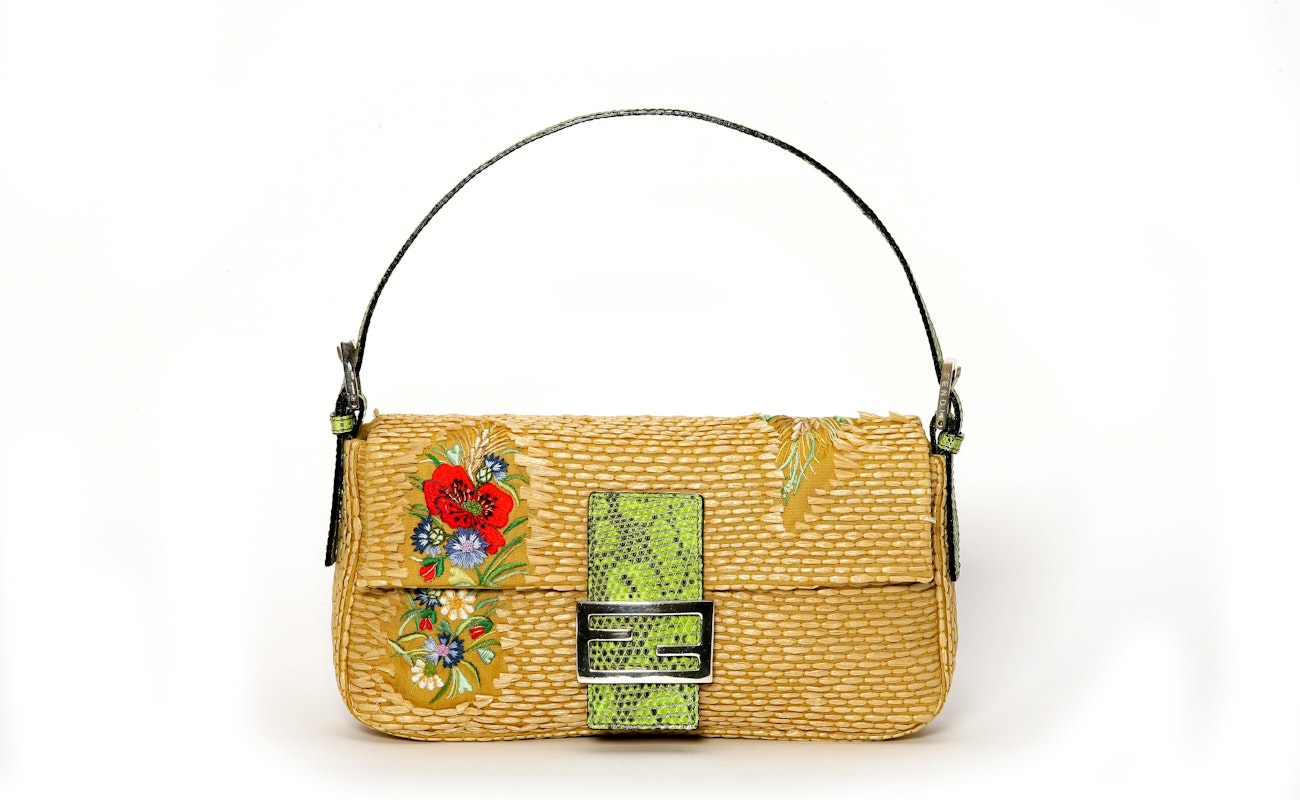

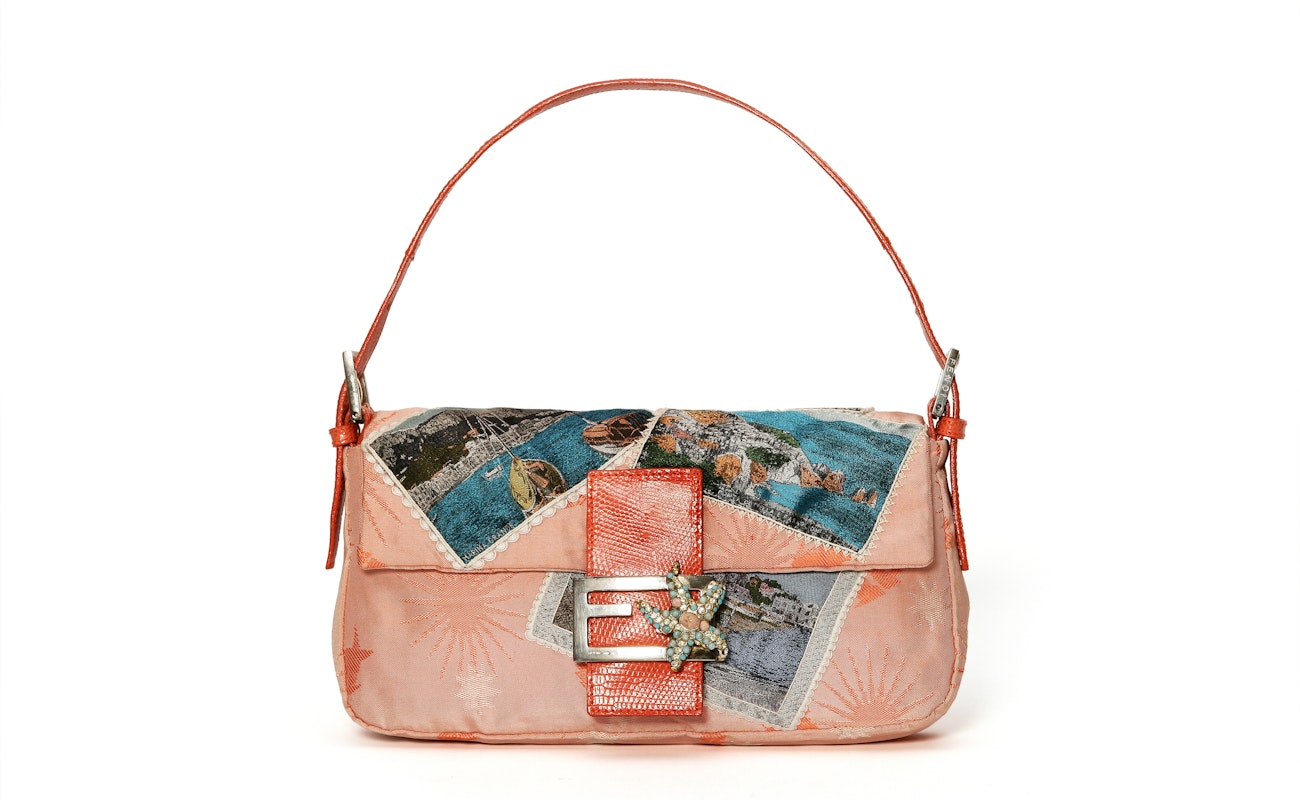
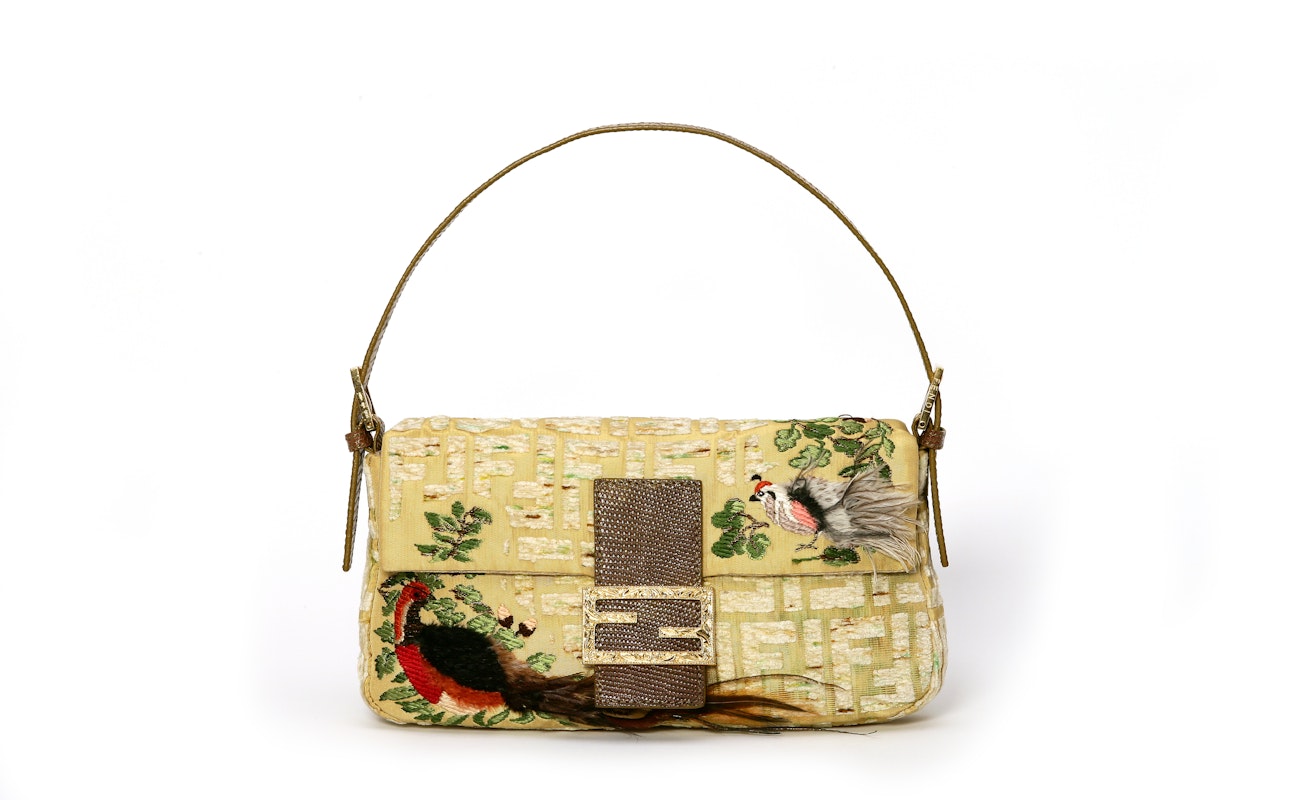
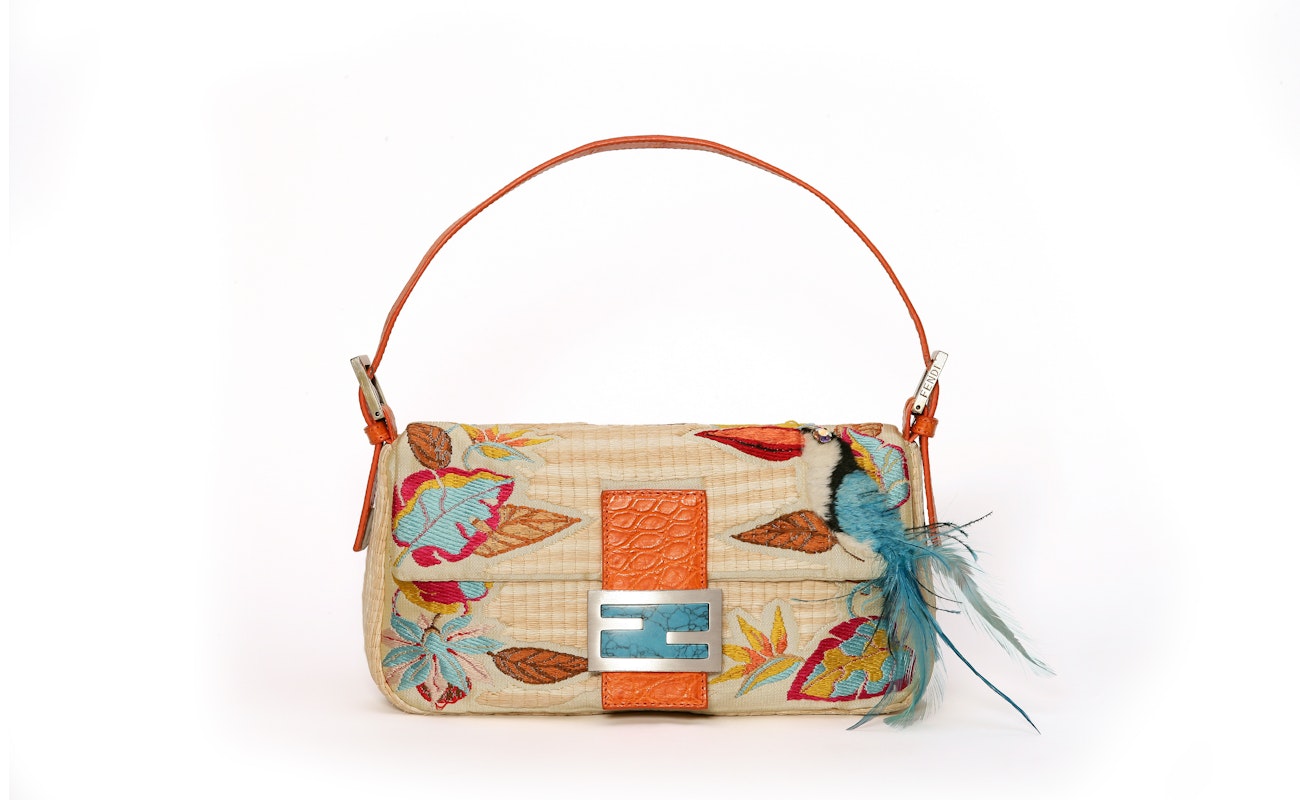
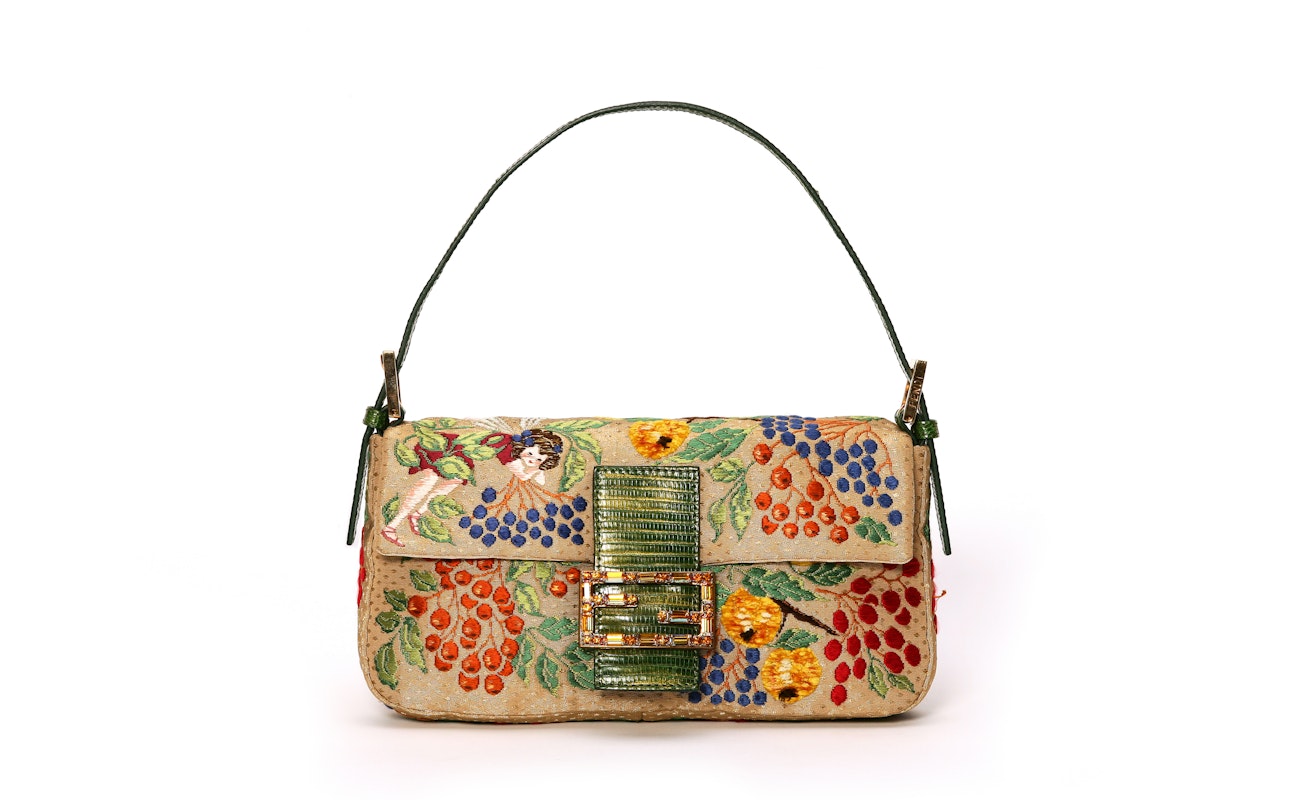
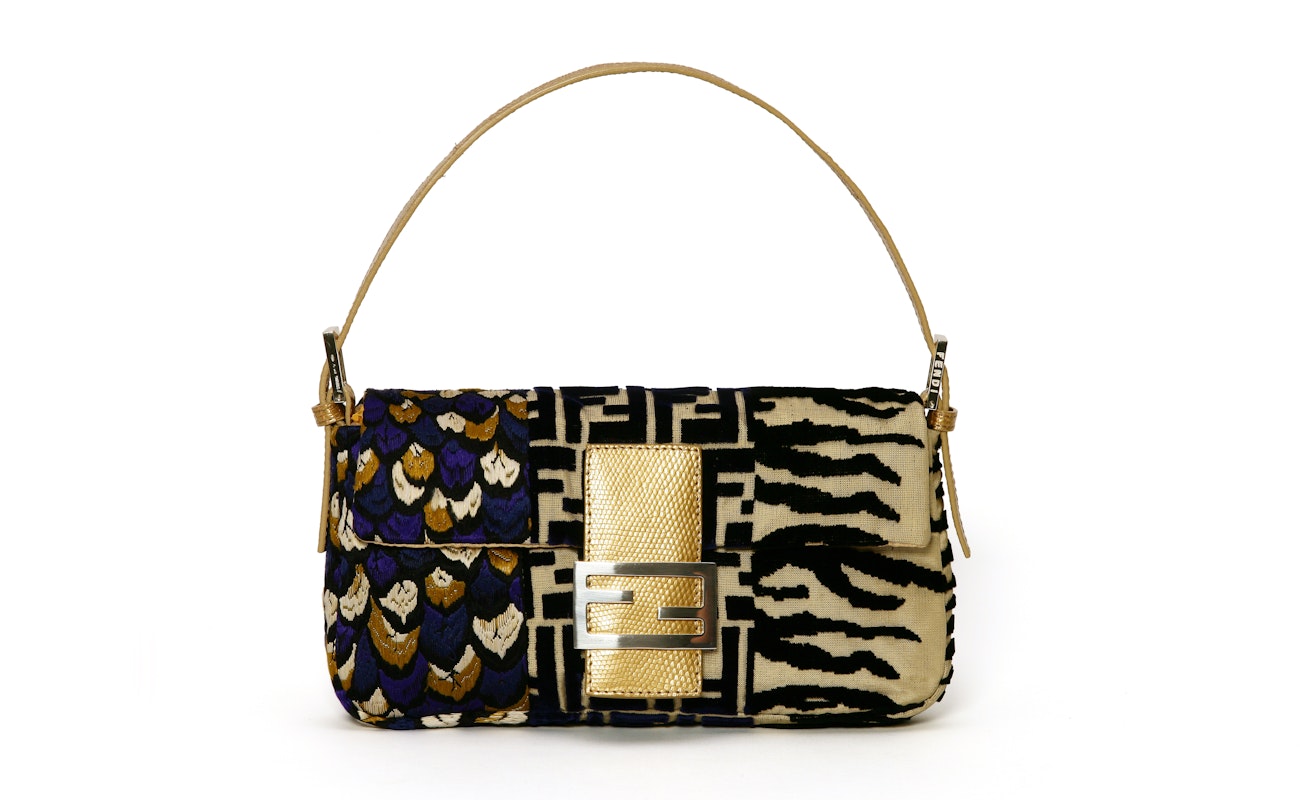
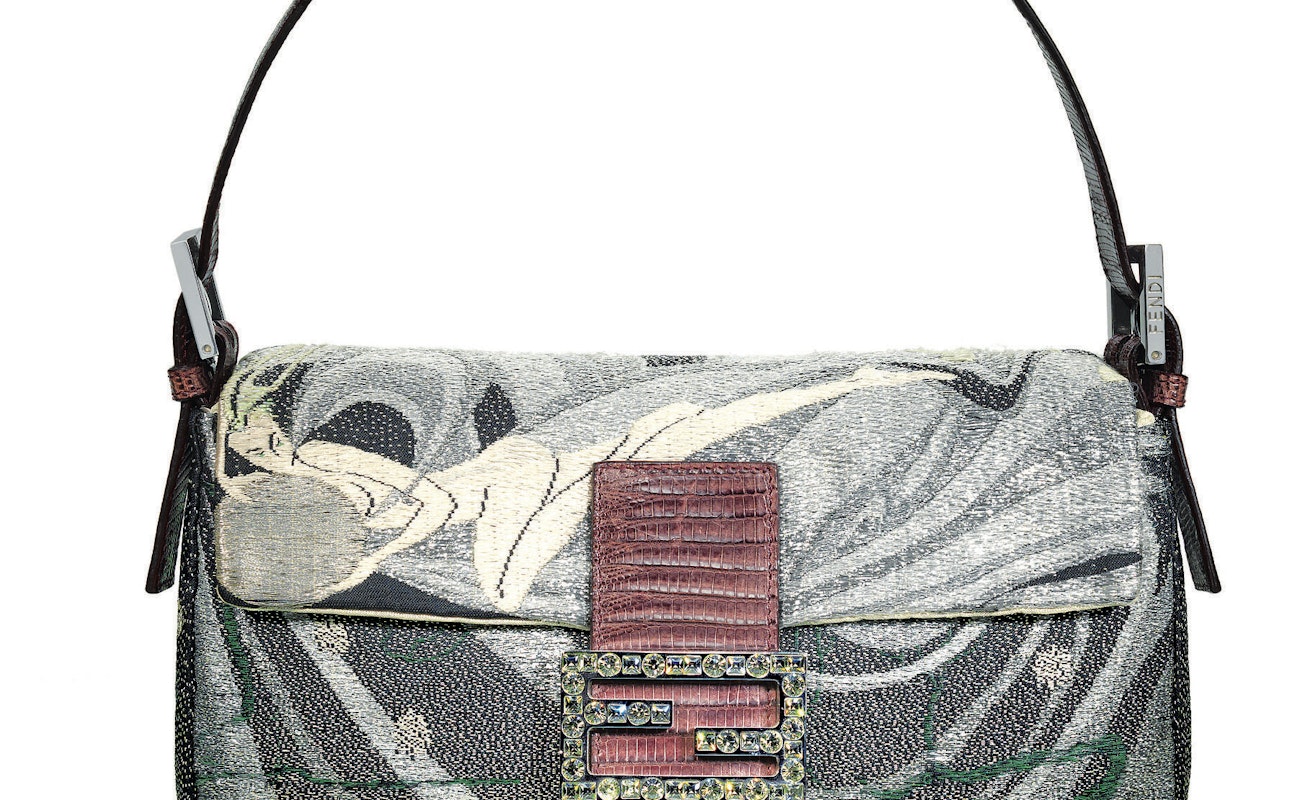
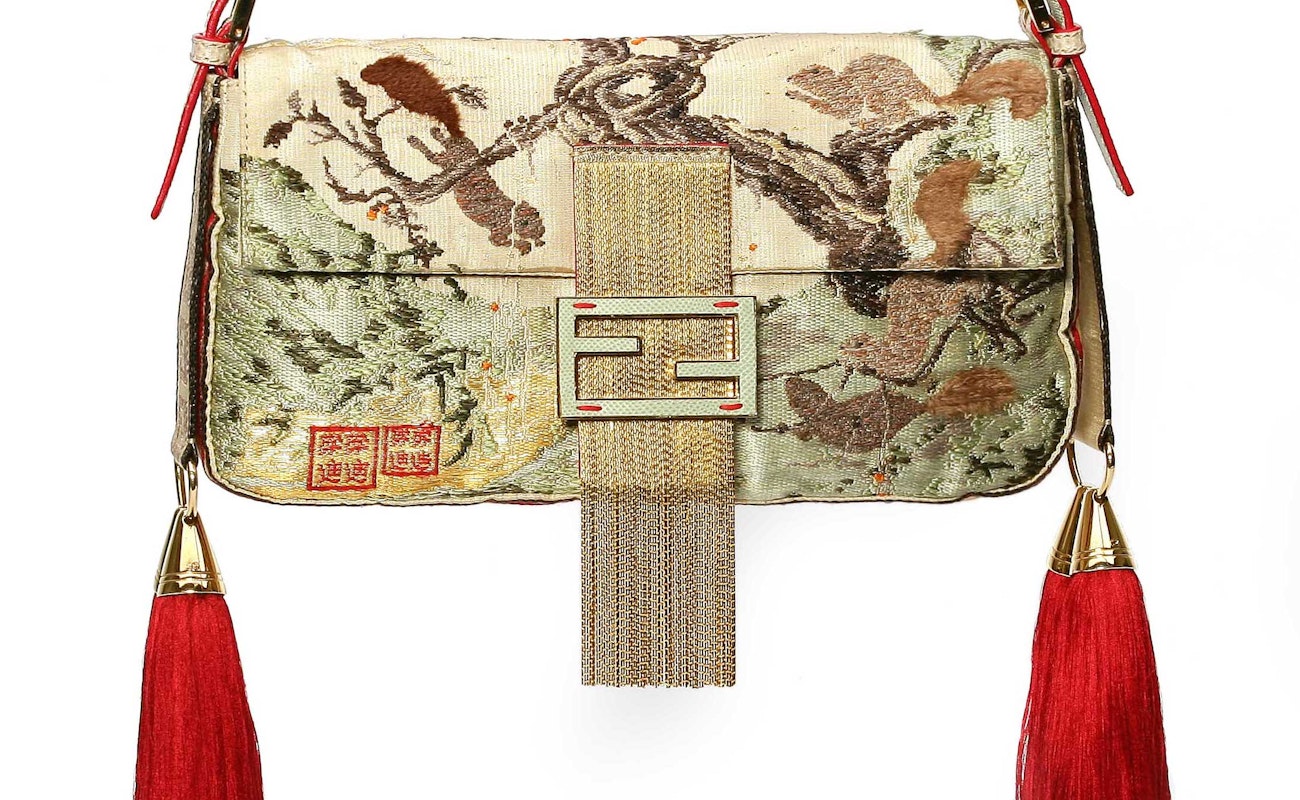
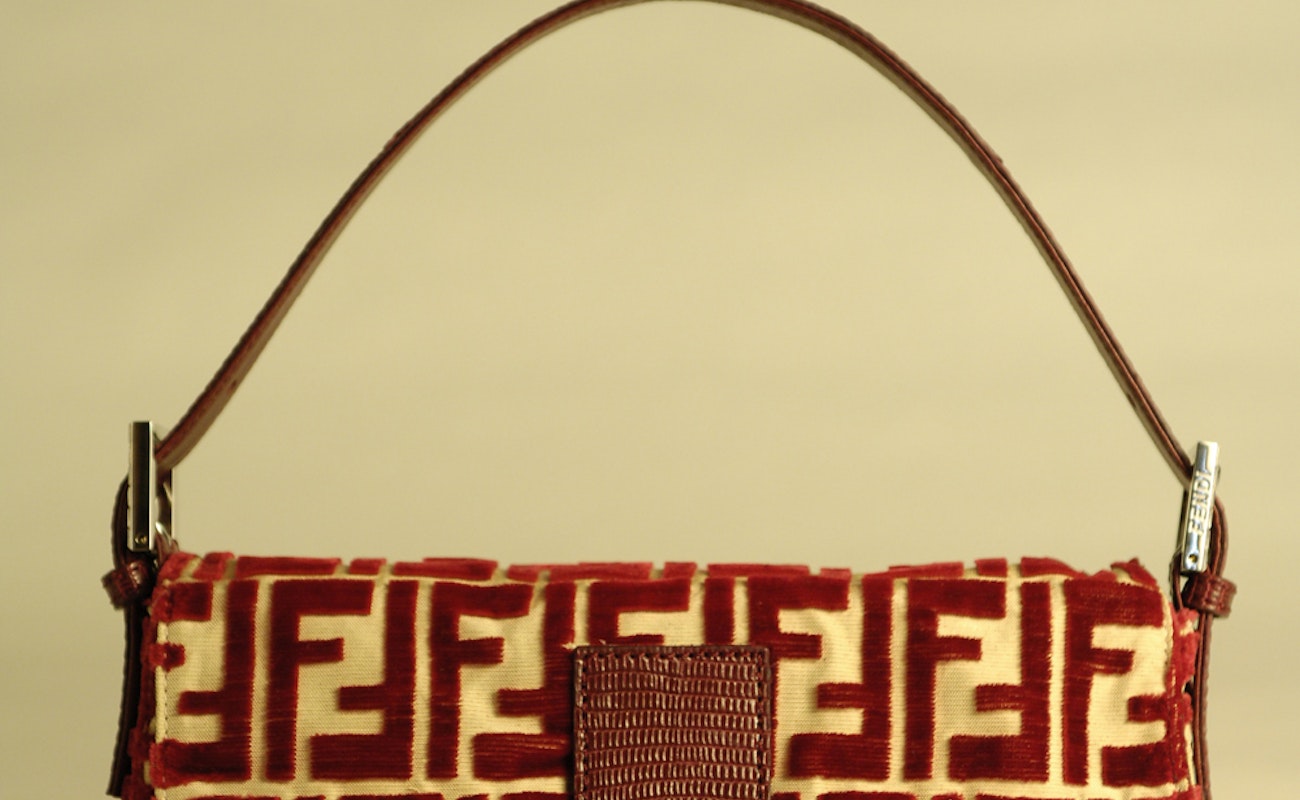

FF Velvet
The first textile created by the Fondazione LISIO for Fendi baguettes was a velvet featuring the famous monogram of two “F”s on two staggered horizontal rows.
Many orders were placed for two versions of this textile – in cut velvet and uncut velvet – between 1997 and 2005.
The golden age of velvet weaving was during the Renaissance, when Florence was one of the leading centres of production in Italy.
The Fondazione LISO is dedicated to preserving this venerable tradition and continues to practise the ancient weaving technique, which can only be accomplished on hand looms.
In order to create the “FF velvet” a wooden structure called a “cantra” or creel had to be constructed behind the loom and mounted with 800 small bobbins containing the organzine for the pile warp that forms the characteristic tufts of cut velvet and the loops of the uncut variety.
Version in cut silk velvet with the Fendi monogram woven in five different variants with pile colours: gold, black, red, sky blue and pink on an ivory ground.
Version in uncut silk velvet with the Fendi monogram woven in the two pile colour variants of sky blue and pink on an ivory ground.
The collaboration between Fendi and the Fondazione Arte della Seta Lisio is a perfect example of italian savoir faire and excellence in craftsmanship. In a successful blend of innovation and tradition, the most modern design technologies merge with time-tested production techniques for velvets, silk brocades, and precious metals, which the Fondazione has protected and passed on since its founding in 1971. From 1997 to 2004, as well as for the groundbreaking fashion show held in 2007 on the Great Wall of China, the Fondazione Lisio has created velvets, brocades and silks decorated with antique motifs. Fendi has worked side by side the Fondazione Lisio for every phase of the articulated design process for twelve Baguette models, all of which have been created with hand-stitched fabrics produced on the Fondazione legendary looms. The first Baguette in 1997, created with a patterned velvet that defi nes and highlights Fendi's double F monogram, pays a homage to the ancient art of hand-weaving valuable velvets, a technique in Italian manufacturing that achieved its splendid apex from the fifteenth to the eighteenth centuries.
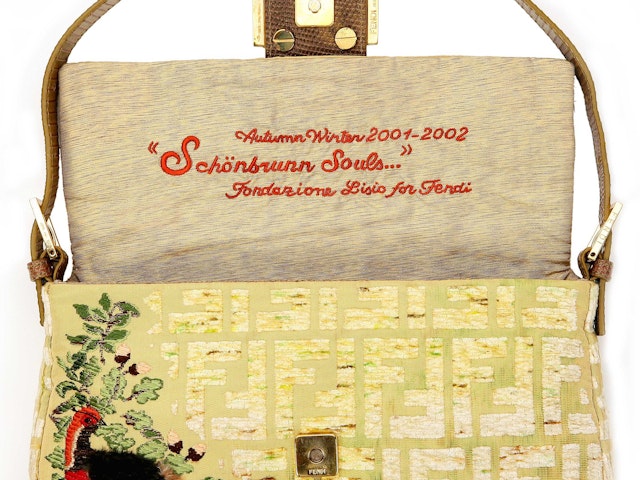
Schönbrunn Souls...
The autumnal theme of this textile, as initially proposed by the Foundation’s creative team, was to have been expressed through a hunting scene. As the design process progressed, however, the autumnal feeling came to be conveyed by pheasants, leafy branches with acorns and the double-F motif of the Fendi monogram.
Yellow silk Lampas (hand-dyed with flecked finish for the warp), lancé with 2 wefts in green silk, brocaded with 8 shades of silk, with hand-dyed silk chenille in chiné and with real peacock and ostrich feathers in 5 colours; embroidery in silk and gold; appliqué embroidery using glass beads and peacock, pheasant and mallard feathers.

Jungle Fever
The baguette called “Jungle Fever ” is composed on a patchwork of two textiles. The first is a cut velvet with two designs: in the centre, the double F Fendi trademark and on one side a motif resembling a tigerskin. The second textile is a lampas lancé with a feather motif in silk with five colours.
For the velvet, designed and prepared for weaving by Eva Basile, 80 cards were punched by in-house experts and 800 bobbins were mounted on the creel for the pile warp, which in this case was arranged in bands of black and dark blue silk. The tigerskin portion is black and the double F motifs are in dark blue, with an extraordinary shot effect produced by the shifting light reflection and the textile's movements
Cut silk velvet; silk lampas with gros de Tours ground and 5 lancé wefts in silk
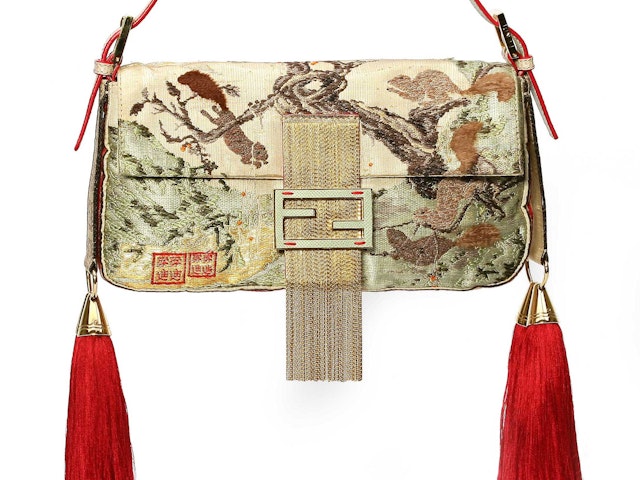
The Wall
For this last project, devised for the Fashion Show that Fendi organized on the Great Wall of China in October 2007, the creative team of the fashion house asked the Foundation to base their design for the textile on a reproduction of an ancient Chinese painting.
The Foundation’s working group rose to yet another challenge with their customary enthusiasm, conscious that once again they would certainly encounter difficulty both on the design and on the technical fronts.
The first problem to overcome was the transcription of the faint image of the Chinese painting, in which a group of squirrels chase each other up a gnarled tree that stretches out from a rocky spur, using a very material-based means of expression; what was needed, therefore, was a textile that itself had powerful powers of communication and description.
Now came the second aspect of the challenge: the actual weaving of a textile that is rarely attempted because of the technical difficulty involved: a lampas in which the binding warp is gold rather than silk.
Lampas with organzine ground warp and fine gold binding warp; silk and gold foil lancé; silk, silver and fine gold, cashmere and ostrich feathers brocade.

